Physical Address
304 North Cardinal St.
Dorchester Center, MA 02124
Slipped capital femoral epiphysis (SCFE) is the most prevalent hip disorder presenting during adolescence, occurring at a rate of 10 per 100,000 children. It is characterized by anterior translation and external rotation of the proximal femoral metaphysis relative to the epiphysis, resulting in an anterior metaphyseal prominence and obligate external rotation of the hip with flexion ( Fig. 31.1 ). SCFE typically occurs during rapid growth related to puberty. The proximal femoral physis becomes more vertical with age, changing most rapidly between 9 and 12 years of age.
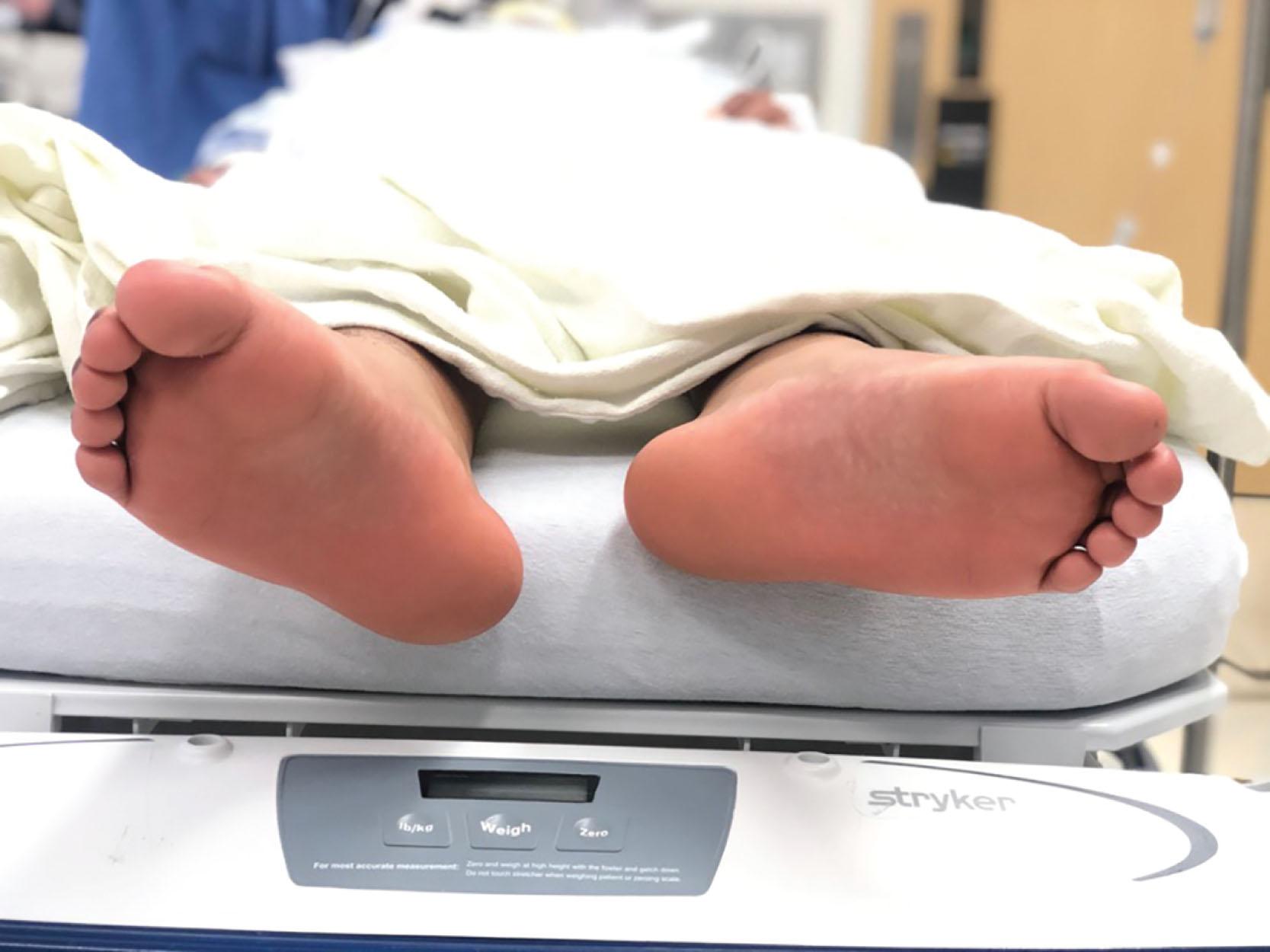
SCFE is more common in males than females, occurring at an average age of 13 and 12 years, respectively. The mean time from symptoms to diagnosis is 10 weeks for mild slips and 20 weeks for severe slips. Children may initially present with referred knee pain, further delaying diagnosis. Time to diagnosis has not improved, despite increased education, awareness, and understanding of the disease. The prevalence of SCFE is increasing with the growing rate of childhood obesity.
This chapter will review important treatment considerations including risk factors, surgical treatment, and complications of SCFE management. The most up-to-date treatment recommendations will be discussed, which remains a controversial topic with limited high-level studies.
Anteroposterior and frog lateral radiographs of the pelvis are the standard views to evaluate for SCFE. Klein’s line and the Southwick slip angle can be used to diagnose SCFE ( Fig. 31.2 ). A Southwick slip angle of less than 30 degrees is defined as mild, 30 to 60 degrees as moderate, and greater than 60 degrees as severe slip. The epiphyseal tubercle ( Fig. 31.3 ) is a posterosuperior structure that decreases in size during adolescence, thus decreasing the stability of the proximal femoral physis. In a chronic slip, the metaphysis is thought to rotate around the eccentrically located epiphyseal tubercle.
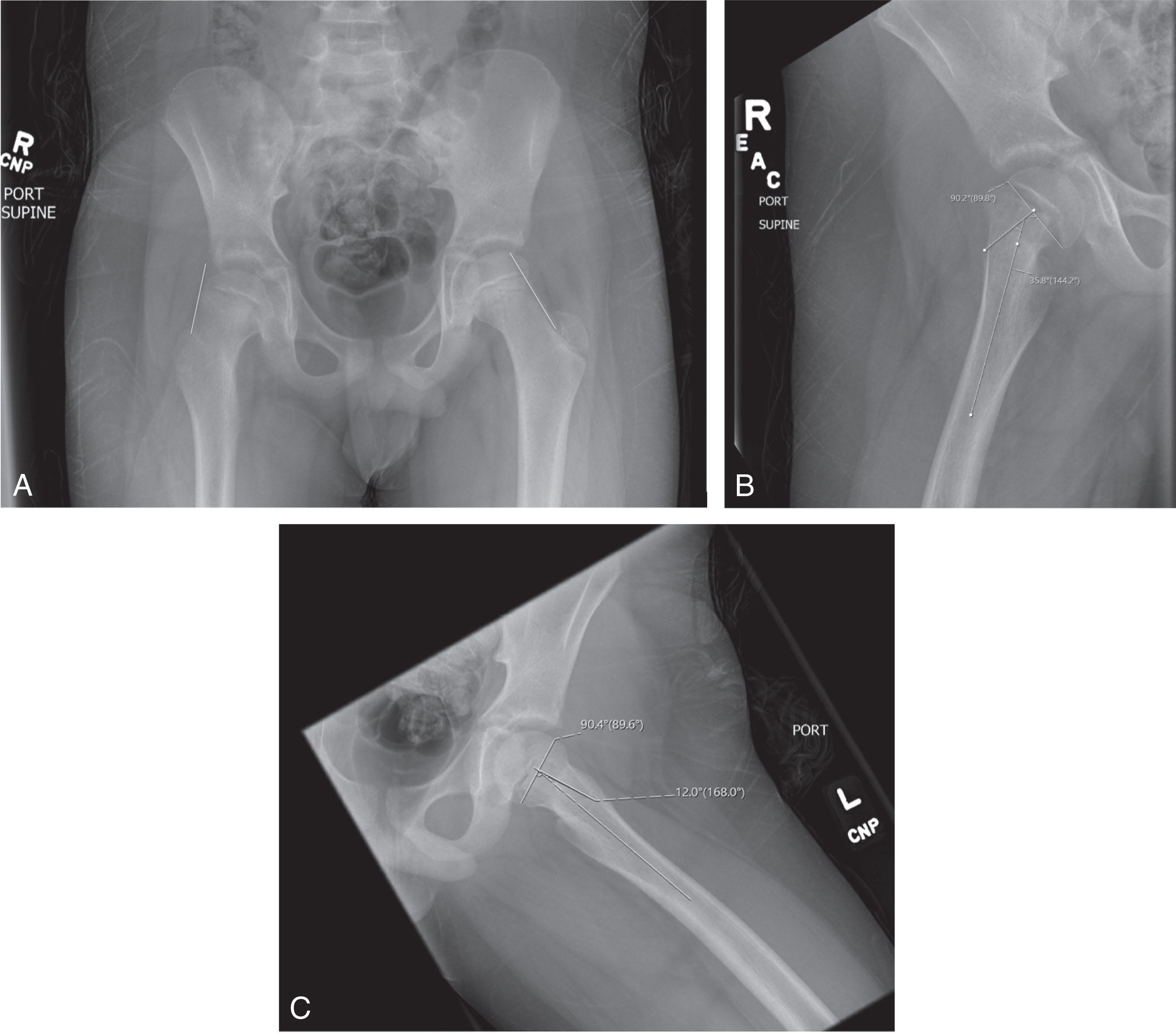
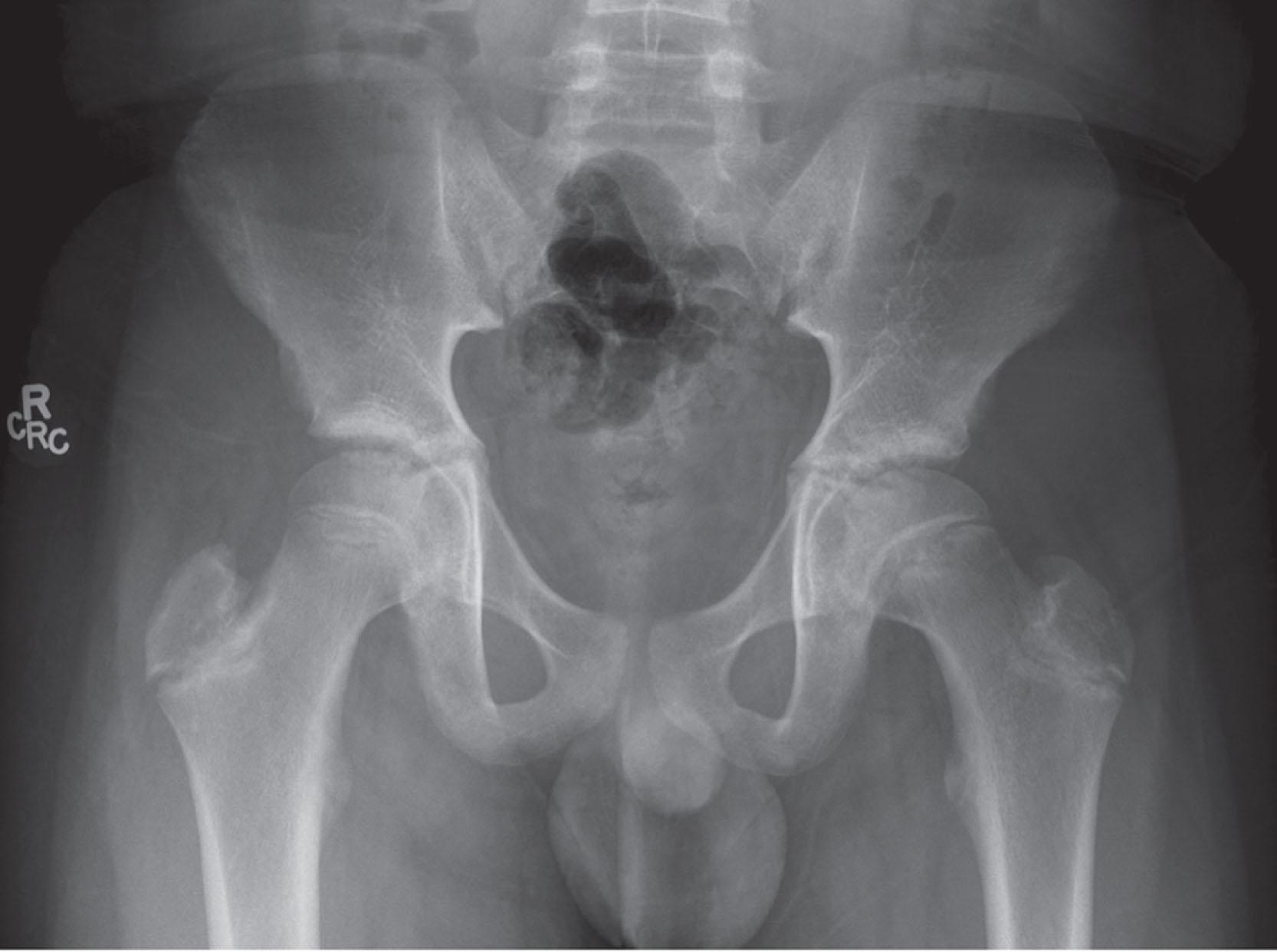
SCFE occurs most commonly in obese adolescents from 10 to 16 years old without an endocrine disorder. An underlying endocrinopathy is more common in the setting of atypical SCFE: younger than 10 years, older than 16 years, or between 10 and 16 years old with a body mass index below the 50 th percentile. The most common endocrine disorder is hypothyroidism; T3 is necessary for chondrocyte differentiation. Screening labs should be obtained in an atypical SCFE, including renal function (blood urea nitrogen, creatinine) and thyroid function (thyroid-stimulating hormone, free T4) tests. If screening labs are normal or for patients older than 16 years, a full endocrine workup is indicated.
SCFE can be categorized as acute (<3 weeks), chronic (>3 weeks), or acute on chronic (prodromal symptoms with sudden worsening). Stable slips have traditionally been defined as a child who is still ambulatory, whereas an unstable slip is when a child cannot bear weight on the affected leg ( Fig. 31.4 ). Unstable SCFE has also been defined by the ease of relative reducibility and by the presence of a hemarthrosis. Approximately 85% of SCFE cases are chronic, and only 5% are unstable at presentation.
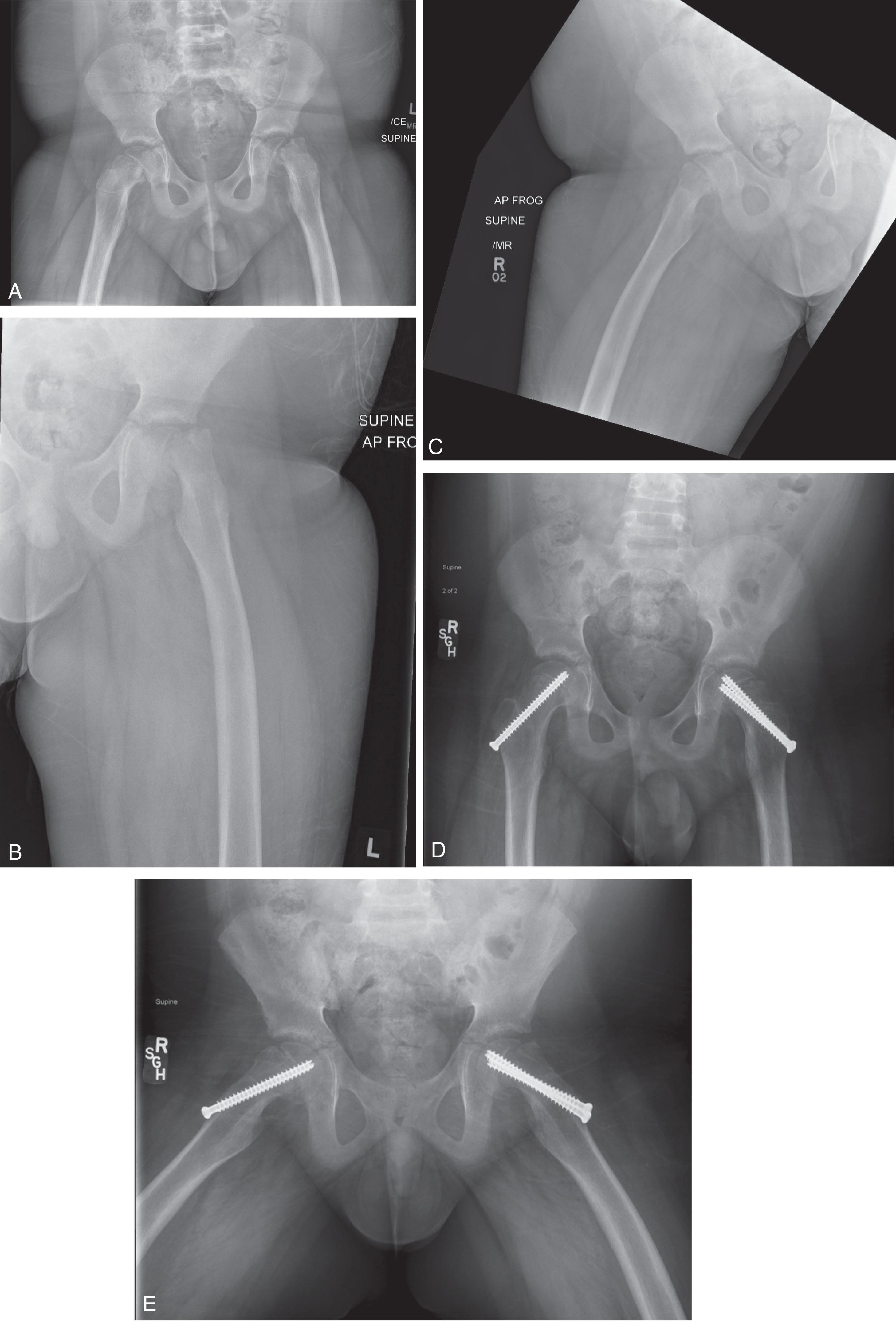
Bilateral slips occur in 20% to 40% of patients and are more common in the setting of endocrine disorders. There is also an association between decreased age at time of SCFE and increased likelihood of contralateral slip. A study of 227 patients with unilateral SCFE reported a 36% occurrence of metachronous slip with a mean of 6.5 months after the first slip, and typically within 18 months.
Prophylactic fixation is often recommended in younger patients (girls <10 and boys <12 years old), in the setting of renal or endocrine disorders, and in cases with an open triradiate cartilage. The posterior sloping angle (PSA) is a measure of the physeal vertical shear force and is considered a predictive marker of contralateral slip ( Fig. 31.5 ). A PSA greater than 14 degrees is associated with a 65% future risk of SCFE.
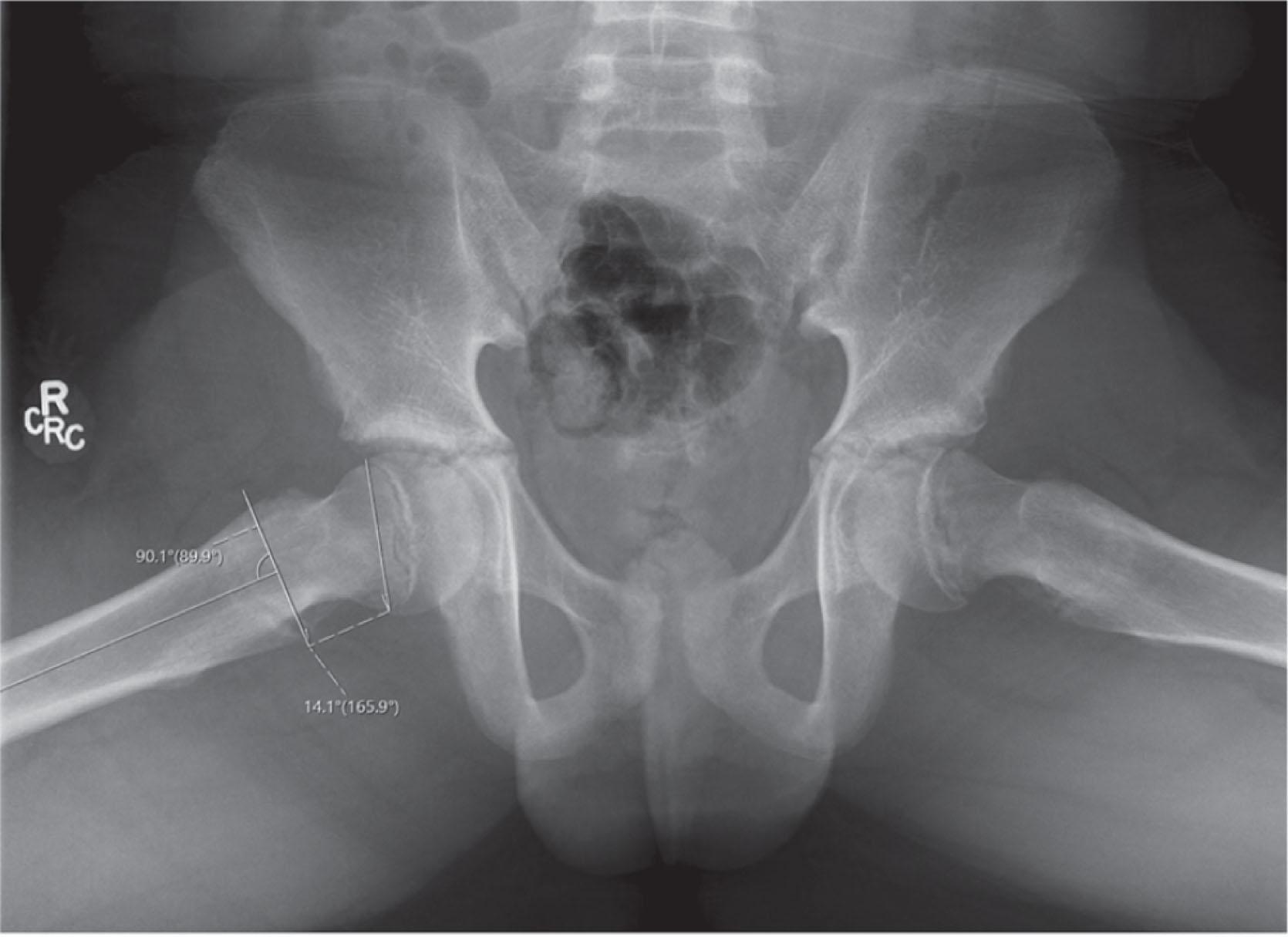
Complications of prophylactic fixation are infrequent, around 1%. Rare but severe complications such as peri-implant fracture and avascular necrosis (AVN) have been described by Sankar et al. However, the risks associated with future slip, such as deformity and need for reconstructive surgery, potentially pose higher morbidity than prophylactic pinning. Thus, we recommend shared decision-making with the patient and family in each individual case, weighing the risks and benefits of prophylactic fixation versus careful observation for symptoms in the contralateral hip.
Become a Clinical Tree membership for Full access and enjoy Unlimited articles
If you are a member. Log in here